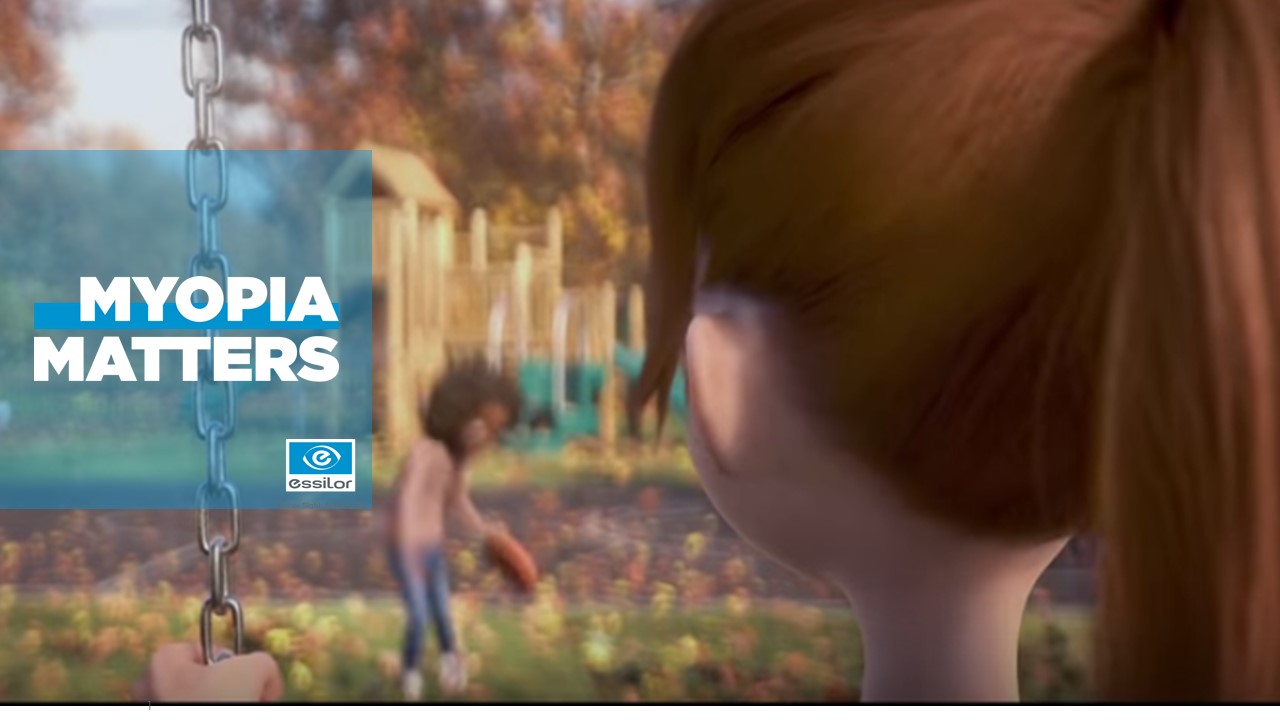Making Myopia Matter: How ECPs Can Help
By Dr. Ryan Parker, Director of Professional Education, Essilor of America

Picture this: You’re giving an eye exam to a child who is struggling to name the letters on the Snellen chart. When you tell the parents their child needs vision correction, they seem bewildered and ask their child, “Why didn’t you tell us you couldn’t see?” The child has no answer. Sound familiar? Parents sometimes assume kids can see without any problems, but about half of myopic children don’t know they can’t see clearly. And this number will only continue to grow since myopia is one of the most prevalent vision issues, especially in children. As eye care professionals, we should no longer view myopia as just a refractive error issue with blurry vision. We need to proactively treat the condition to prevent negative consequences for patients now and later in life because once myopia progresses, you can't turn back the clock.
Why take a proactive approach About 42 percent of Americans ages 12-54 are nearsighted, up from 25 percent just 40 years ago. This statistic clearly shows that myopia is a real and growing problem. We know that over time, myopia can put the eyes at risk for serious vision-threatening conditions. That’s why the sooner we can diagnose and treat it, the better it is for our patients. And it’s especially important for children, as uncorrected myopia can lead to issues now and when they’re adults such as:
- They may not perform as well in school and in other activities like sports.
- Later in life, children who are myopic have an increased risk for sight-threatening vision issues which can lead to blindness. Highly nearsighted adults have a higher risk of retinal detachment, glaucoma and a certain type of macular degeneration.
How and why to educate your adult patients about myopia In addition to not always recognizing the signs of myopia, parents often mistakenly think vision screenings at school or the pediatrician’s office are thorough enough to diagnose any vision problem. That is why it’s our responsibility as eye care professionals to educate parents about how to recognize the signs of myopia and why their children need regular, comprehensive eye exams. The American Optometric Association recommends children have their first eye exam between six and 12 months of age. Imagine how much better the visual welfare of our children would be if that occurred.
We know children usually start to show signs of myopia around age 6 or 7. You can ask your patients with children this age if they’ve noticed any changes such as falling grades, squinting when looking at the TV, computer or a handheld device, or if their child seems more reserved. These can signify a vision issue.
The good news for parents is something as simple as an eye exam can do a lot to reduce the number of children who have uncorrected myopia. Ensuring their child has regular eye exams now can change their life as an adult.
Resources you can use Years ago, there was little we could do to treat myopia except increase the power of a patient’s glasses or contacts. With today’s research and technology, we’re understanding myopia better; we’re understanding how nearsighted kids progress which lets us slow the progression of myopia and actually reduce the amount of their prescription as an adult. For example, we believe the increase in the prevalence of myopia is related to the amount of time children spend indoors working at near vision ranges. Letting parents know a balance in near and distance tasks is essential for children’s visual health.
Join Essilor in driving awareness of myopia and the importance of early eye exams. Visit Essilorshare.com today to access and download materials about myopia to use in your practice including:
- “Out of Focus” movie trailer
- “Myopia Matters” flyer to have available for patients to learn more
- Social media posts to share
Encourage your patients to take a proactive role in their children’s eye health. By doing so, they can help their children see well today and in the future. Because life should not be lived out of focus.